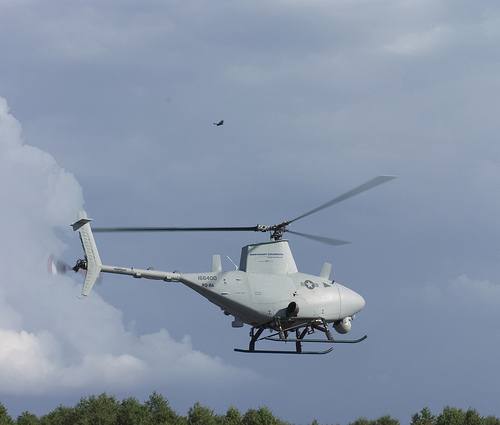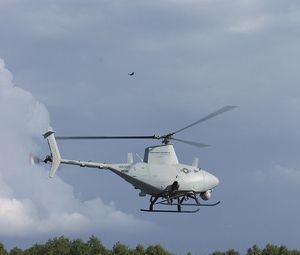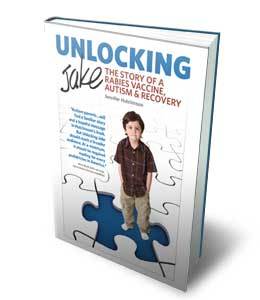

The US military has drone technology. Now Bill Gates is funding similar technology to deliver vaccines.
I think everyone knows how I feel about vaccines. My calm, (somewhat) rational opinion is this: They are, for the most part, not necessary, not working, and not safe. The lack of science—not to mention common sense—behind the dozens of vaccines injected into our children is beyond appalling.
There are two things, however, that the vaccine program definitely isn’t lacking. One is money. The other is imagination.
Billions of dollars are being spent on developing new vaccines. Improving vaccination rates worldwide. Ensuring that vaccines are available to everyone on the planet. All through phenomenally creative methods.
We have—or soon will have—needle-free vaccines. Vaccines with micro needles. Sublingual vaccines. Vaccine patches. Inhalable powder vaccines. The old Star Trek type of vaccines. Even mail-order vaccines. Vaccines that are easier and faster to produce.
No more accidental needle sticks and cross-contamination of deadly diseases. No more refrigeration or syringes. No more vaccine phobia. No more pain. No more tears.
BILL GATES AND “BOLD IDEAS”
When it comes to money and imagination, Bill Gates seems to have an endless supply of both. That man is a tough act to follow. In 2010 he announced a $10 billion pledge over the next decade, saying, “We must make this the decade of vaccines.” [1]
One of his latest financial donations is the subject of this article, which is perhaps the most difficult I’ve written for Vactruth. What I read as I was doing my research left me with a lot of unanswered questions and disturbing thoughts.
Thanks to a sizable grant from the Gates Foundation (with oversight from WHO and UNICEF), $100,000 is being provided to 17 different initiatives, for a total of $1.7 million. [2] The purpose is—and I quote Michel Zaffran, Director of project Optimize and Senior Adviser for WHO’s Department of Immunization, Vaccines, and Biologicals—“to ensure new vaccines reach the millions of people in the poorest countries. The time for ‘business as usual’ has passed—it’s time for bold ideas.” [3]
One “bold idea” is unmanned aerial vehicles to quickly and inexpensively deliver vaccines to hard-to-reach areas. The vehicles will be deployed remotely by healthcare workers. The winner of this project is the Harvard-MIT Health Sciences and Technology Division, with five students under the direction of Professor George Barbastathis. [4] Projects that are successful may be eligible for another grant of $1 million. [5]

A LITTLE BACKGROUND ON TECHNOLOGY
If you’re wondering how aerial vaccines are possible, all you have to do is consider the technology that is already in place. Let’s look at three examples.
Military drones
Since the Vietnam War, the U.S. has been using modern drones that are operated by a remote control and monitored through a live-streaming screen thousands of miles away from the target area. The vehicles hover silently, undetectable by radar. For more information on the use of drones and their controversy, see Michael Hastings’ article in Rolling Stone. [6]
Rabies bait
The oral rabies vaccine is nothing new. In this country, 12+ million doses of Raboral V-RG are dropped from unmanned aircraft every year. Worldwide, more than 100 million doses since the late 1980s. [7] The cost? In the U.S. and Canada, approximately $130 million in a decade. [8]
The ketchup-sized packets, usually dipped in fish oil and coated with fish meal, have been dropped in numerous states. The Texas Department of State Health Services claims to have virtually annihilated rabies in coyotes and foxes, which provides protection for other wildlife, livestock, and domestic animals. Texas has not had a case of human rabies since they began aerial drops in 1995. [9]
If you poke around the Internet a little, you’ll find some “safety” instructions. Basically, the claim is that the bait isn’t harmful for humans or pets (although wildlife is less likely to eat a packet that’s been touched by humans). A few precautions for pet owners: Keep pets inside or tied in the backyard for a week after the bait is dropped. If a domestic animal like a cat or dog eats the bait, avoid coming in contact with the saliva for 24 hours. [10] If you handle the bait, use paper towels or wear gloves. If the vaccine liquid gets on your skin, wash with soap and water, and call the local health department (or the number on the packet). [11]
Sounds relatively safe, right? I thought so, too—until I read the Merial Material “Safety” Data Sheet. It states that the RABORAL V-RG is “potentially hazardous to health if any of the following should occur: ingestion, parenteral inoculation, droplet or aerosol exposure of mucous membranes or if broken skin is exposed to infectious fluids or tissues. All people should avoid contact, but young children, pregnant women, individuals with immune deficiencies or those on steroids should avoid contact with this vaccine.” It also says: “Do not allow undiluted product or large quantities of it to reach ground water, water course or sewage system.” [12]
After further research, I found some adverse side effects. Side effects backed up by lab tests, including “vaccinia virus DNA and rabies virus G protein DNA in papule material and serologic evidence of rabies virus neutralizing antibodies” as well as Simian Green Monkey virus, Epstein-Barr virus capside, and Cytomeglia virus. [13]
South Wales microbiologist Doug Dorst says: “For every fear that biotech propaganda proliferates about deadly diseases and how vaccines prevent them, it is one more lie to incrementally convince the masses that vaccines are effective. … There is a real potential risk to exposure from aerial exposure to aerial DNA virus vaccines. The risk certainly exceeds any benefits …” [14]
If you’ve read my story, you know that the RabAvert rabies vaccine given to my grandson in 2006 wasn’t safe. (Actually, several batches used in that same year were recalled because of a partially inactivated virus.) Many people think “it’s just a rabies vaccine.” My daughter and I know from personal experience that there’s no such thing.
Questions
- Is an oral rabies vaccine that’s safe for coyotes and raccoons, for example, safe for other animals, such as birds? Does “one size fit all?”
- How long does the vaccine last?
- What about the packets that aren’t consumed? Where do they end up? In our water? In our food? Is that safe?
- If the packet ruptures, can it harm plant life and crops?
- Can the vaccine create resistance to the rabies virus?
- What if a hunter kills an animal, such as a squirrel, who has ingested the bait, and eats it?
West Nile Virus spray
Aerial spraying of pesticides has been going on for decades, especially for the West Nile Virus (WNV). This year the virus has been more prevalent, with half the cases in Texas. WNV can be deadly, but most people who contract it never have any symptoms. Between 1999 and 2008, out of almost 30,000 cases, there were approximately 1,100 deaths. [15]
The financial cost? Spraying one county in Texas cost $1 million. [16] Throw in the cost of testing the safety of a pesticide for years at a price of up to $200 million … well, the financial fallout is unfathomable. [17]
The pesticide kills between 60 and 90 percent of mosquitoes in sprayed areas (depending on which article you’re reading). [18] But there are more than a few people who don’t believe these numbers. A former EPA employee and Director of New England Public Employees for Environmental Responsibility Kyla Bennett attempted to acquire the data proving the 60 percent effectiveness rate for mosquitoes carrying eastern equine encephalitis in Massachusetts. She did not get the information she asked for.
The Huffington Post, after being told by the state health department that no one was available to speak, also filed a formal public records request for the data. I don’t know for sure, but I doubt they got the “proof” either. [19]
“Dirt Doctor” radio show host Howard Garrett says the pesticide doesn’t work. His suggestion? Organic pesticides on the ground to kill mosquito eggs and larvae. [20]
All the pesticides, even though they come in different combinations, contain known toxins that don’t just kill mosquitoes. They cause serious damage to fish and other aquatic animals and pets. They’ve been linked to breast and liver cancer and endocrine disruption. They’ve been blamed for the “die off” of bees and potentially disrupting “our natural ecosystem.” [21]
One chemical, according to a study that appeared in the journal Pediatrics, can disrupt brain development in the womb. Another, a weapon used during WWII and described by its manufacturer as “a possible carcinogen,” can damage a child’s nervous system. [22]
“The cure is worse than the disease,” says Organic Sacramento, a nonprofit organization. “You’re spraying poison over thousands of people for the potential of maybe helping a handful of people.” [23]
I can’t help but think of one of the recently proposed causes of autism. Household dust while the baby is in the womb—a cause that is the subject of an NIH-funded research study. I don’t understand how that can possibly be a concern to a government that maintains it’s perfectly safe to inhale aerial pesticides that are sprayed into the environment.
Questions
- Is a 60 percent effectiveness rate—if that’s indeed true—“effective?” That leaves almost half of the mosquitoes alive and potentially spreading the virus.
- What if the spray kills mosquito predators? Wouldn’t we end up with more mosquitoes?
- What does the spray do to our crops?
- Can mosquitoes and other exposed creatures develop resistance to the virus?
- Could the WNV spraying be responsible for pertussis outbreaks? [24] After all, cases have doubled in the last year—a year in which a lot of spraying has been going on. [25]
- If it’s so safe, why, when the Dallas area was going to be sprayed in August, were the pilots instructed to avoid the home of former President Bush? [26]
AERIAL VACCINES ARE ON THE WAY—BUT WHY?
You could read about drones, the aerial delivery of rabies bait, and pesticide spraying and learn something new with every article. I’ve explored the current technology because the information is relevant to the aerial spraying of vaccines.
I’m certainly not minimizing rabies, but why spend all that money and go to so much trouble for a disease that kills one or two humans a year? It just doesn’t make sense. Not coming from a government that claims far more deaths from childhood diseases, like measles and whooping cough—not to mention the flu.
Would they really do this for rabies for almost 20 years and not have already come up with a similar scheme for these other diseases? I can’t believe that their concern is for wildlife, livestock, and domestic animals. There has to be another reason, another explanation. Maybe …
The rabies virus has been eliminated. Safely. Quickly. Or so we’re told. Assuming that our ketchup packets (or some other food or our water) don’t already contain vaccines, the only obvious next step is using the drones to spray all kinds of vaccines. The MMR, DTaP, flu … No one will even know. There will be no informed consent. No declining vaccine rates—they would literally explode overnight. I’m extrapolating here, but when you think about it, it’s really not that much of a stretch.
What I can’t figure out—what is keeping me awake at night—is why? What’s in it for “them?” Where’s the money? The vaccine industry as we know it is a $2 billion a year business. Will aerial spraying make it even more lucrative? The grant winners got a small piece of the pie. What about the people who remote-control the drones? The people who actually manufacture them? Or those who outfit the drones with the vaccine spray? Is this really about money?
Where’s the quality control? I realize those are words we don’t usually connect with vaccines, but who will be in charge of this program? We all remember past problems—failed freezers, reused syringes, accidental needle sticks, and, of course, the time Baxter Pharmaceuticals shipped live avian flu virus (mixed with vaccine material) to medical distributors in 18 countries. [27] So many opportunities for dangerous, if not fatal, mistakes.
Could this be about power? Control? It’s so easy to scare people. Fear is powerful and controlling. You know, we have this deadly pertussis outbreak. Everybody better get a pertussis vaccine. That is, if they don’t decide to spray them on us. Or maybe they’ll encourage both methods of delivery.
If you do as much research as I’ve done, you’ll end up with your head spinning. Some of my thoughts are unthinkable. Not impossible. Just unthinkable. I used to think that people who suggested vaccines as a means to population control were crazy. Now I’m not so sure.
Take Bill Gates, for instance. At the 2010 TED (Technology, Entertainment, Design) conference, he stated: “The world today has 6.8 billion people. That’s headed up to about 9 billion. Now if we do a really great job on new vaccines, health care, reproductive health services, we could lower that by perhaps 10 or 15 percent.” [28]
AND A FEW MORE “WHAT IF’S?”
What if one exposure to a toxic chemical isn’t too bad, but after a few years, it might be deadly?
What if combining different pesticides together could add up to a “toxic tipping point?”
What if some effects of vaccine spraying don’t show up immediately but, like the cancers caused by the 9/11 World Trade Center toxins, surface years after exposure?
How many times in the past have we been told that something is safe, but years later we learn that it wasn’t true?
Help me out here. What do you think is behind the aerial spraying of vaccines?
[contentbox headline=”REFERENCES” type=”normal”]
1. http://forumblog.org/2010/01/bill-and-melinda-gates-pledge-us-10-billion…
2. http://www.grandchallenges.org/ImproveVaccines/Topics/Pages/…
3. www.who.int/immunization/newsroom/newsstory_grants_optimize_imm_systems/en/index.html
4. www.gatesfoundation.org/global-health/Pages/gce-round8-winners.aspx#image=4
5. www.grandchallenges.org/Explorations/Pages/GrantsAwarded.aspx
6. http://www.rollingstone.com/politics/news/the-rise-of-the-killer-drones-how-america…
7. http://preventdisease.com/news/12/011712_Look-Up-The-New-Age…
8. http://wwwnc.cdc.gov/eid/article/15/8/08-1061_article.htm
9. http://remixxworld.blogspot.com/2012/01/texas-department-of-state-health.html
10. www.cleveland.com/sun/all/index.ssf/2012/08/distribution_of_oral_rabies_va.html
11. http://www.hurherald.com/cgi-bin/db_scripts/articles?…
12. www.raboral.com/pdf/RABORAL_V_RG_w_bait_2005%28USA%29.pdf
13. http://www.cdc.gov/mmwr/preview/mmwrhtml/mm5843a2.htm
14. http://preventdisease.com/news/12/011712_Look-Up-The-New…
15. www.cdc.gov/mmwr/preview/mmwrhtml/ss5902a1.htm
16. www.huffingtonpost.com/2012/08/17/dallas-west-nile-virus_n_1791551.html
17. www.abctlc.com/courses/aerialapplication.pdf
18. www.huffingtonpost.com/2012/08/17/dallas-west-nile-virus_n_1791551.html
19. http://www.huffingtonpost.com/2012/09/18/pesticide-spray-west-nile-mosquitoes_n_1895014.html
20. http://articles.latimes.com/2012/aug/16/nation/la-na-nn-dallas-west-nile-spray-20120816
21. www.naturalnews.com/036877_aerial_spraying_West_Nile_virus_chemicals.html
22. http://www.huffingtonpost.com/2012/06/14/pesticide-spraying-west-nile-toxic…
23. http://www.huffingtonpost.com/2012/06/14/pesticide-spraying-west-nile-toxic…
24. www.omsj.org/blogs/whooping-con-outbreak
25. http://www.wfaa.com/news/health/State-issues-advisory-after-Dallas-whooping…
26. http://www.cbsnews.com/8301-201_162-57495136/dallas-begins-aerial-assault-on-west-nile-virus/
27. www.naturalnews.com/025760.html#ixzz2A2kOorS4
[/contentbox]